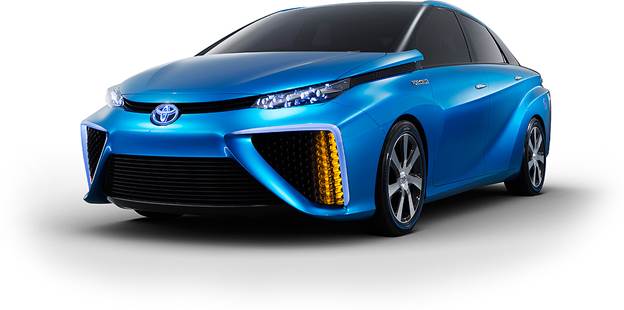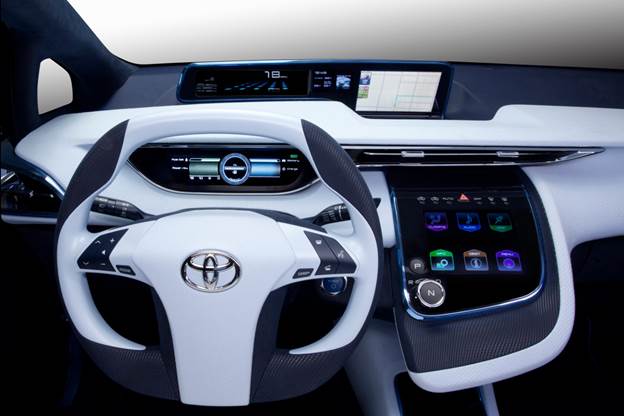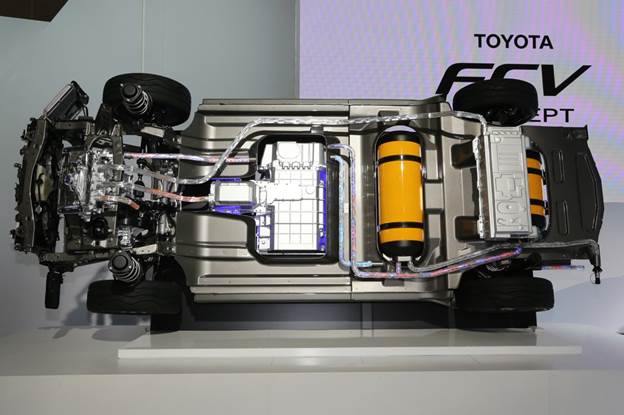Having dipped their toes in the water some
20 years ago with the technology, a group of car makers is now set to launch
production fuel cell vehicles on the market within the next two years. One of
those pioneers is Toyota, and for Katsuhiko Hirose, project general manager for
fuel cell system development, such a day has been a long time coming.

Toyota
has been showing off its fuel cell concept vehicle at the international auto
show circuit. The FCV is set for production and sale in 2015.
Fuel cells have fallen out of the public
gaze of late, seemingly stalled by the lack of a clear solution to the problem
of providing a large-scale supply of hydrogen fuel. As such, the once-utopian
vision of zero-emissions transportation stretching into an endless green tinted
future seems to have dropped off the mainstream, shorter-term agenda for many
car makers and suppliers.
But the fuel cell is far from moribund.
Some car makers are developing the technology with continued (and in some cases
renewed) vigor, and serious thought is finally being applied to the hydrogen
infrastructure question as the reality of viable, available fuel cell vehicles
suddenly creeps up on us.
One of the major drivers of such a fuel
cell future is Toyota, which has long pioneered the technology, along with the
likes of Daimler, General Motors, Honda, BMW, Nissan and Hyundai-Kia. Within
Toyota circles, Katsuhiko Hirose, the company’s project general manager for
fuel cell system development and energy affairs, is integral to that drive,
having progressed from general engine development to hybrid R&D in 1996 –
and in doing so, playing a key part in developing the original Prius – and has,
since 2003, been heavily involved in all matters relating to fuel cells.
Hirose gets straight to the point: “We will
launch a fuel cell car in 2015. There has been some delay; day-by-day there has
been trouble, but this is normal. We showed a car at the last Tokyo show and
now we’re working to the 2015 goal.”

2015
Toyota Fcv R Concept Interior Steering Wheel And Dash
Will that show car, then, be close to the
fuel cell vehicle that Toyota will put into production? “No, it will be
completely different. But it will still be a D-segment luxury car. It will be
our car, which we will do alone, and not as part of a joint venture with other
organizations.”
Clearly, certain things have happened to
make such a car viable. “Factors such as the US$850m investment grant from the
British government to encourage the development of ULEVs between 2015 and 2020
has helped. This of course includes hydrogen cars. We are part of the UK
H2Mobility project along with DaimlerBenz, Nissan and Hyundai, looking at how
we can produce and commercialize hydrogen vehicles and present the ideas to the
government. The UK and Japan are the leaders in government encouragement and
setting up an infrastructure, along with the USA, Germany and the Nordic
countries.”
Design for Life
At first glance, this compact crossover
show car, which was unveiled at Geneva earlier this year, seems to be all about
dynamic design and the use of new materials. The striking-looking Intrado is
the first Hyundai concept to be created under the direction of new president
and chief design officer Peter Schreyer, and the vehicle showcases the use of a
super-lightweight carbon fiber reinforced plastic frame, as well as advanced
manufacturing techniques for joining and bonding components.

Fuel
cell cars convert hydrogen to electricity, emit only water vapor and have a
similar range to conventional petrol-driven cars.
“But it’s a different kind of concept – far
more than just a styling exercise,” claims Schreyer, explaining that powertrain
engineers were very much involved in its creation. Mark Hall, Hyundai Motor
Europe VP, adds, “The frame is only part of the story. We looked at how new
materials and the design of the Toyota FCV Concept allows for the placement of
two 70MPa high-pressure hydrogen tanks under the specially designed body. This
arrangement enables the car to accommodate up to four occupants. The design of
the Toyota Fuel cell reckoning technologies enable the development of something
different.”